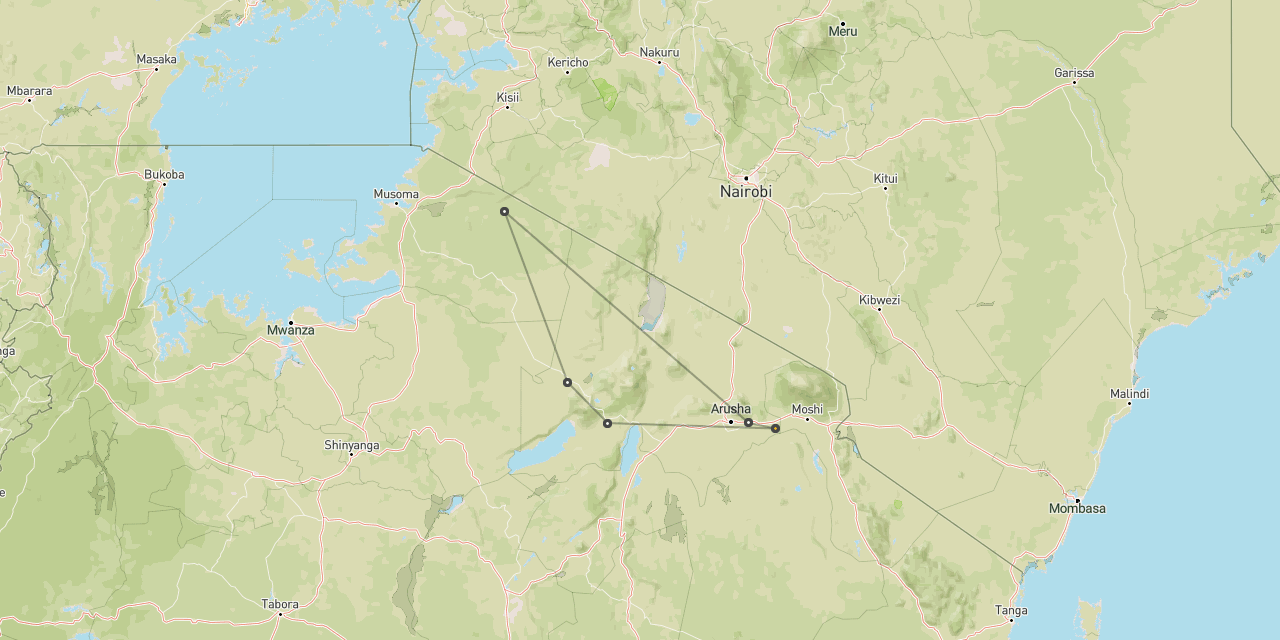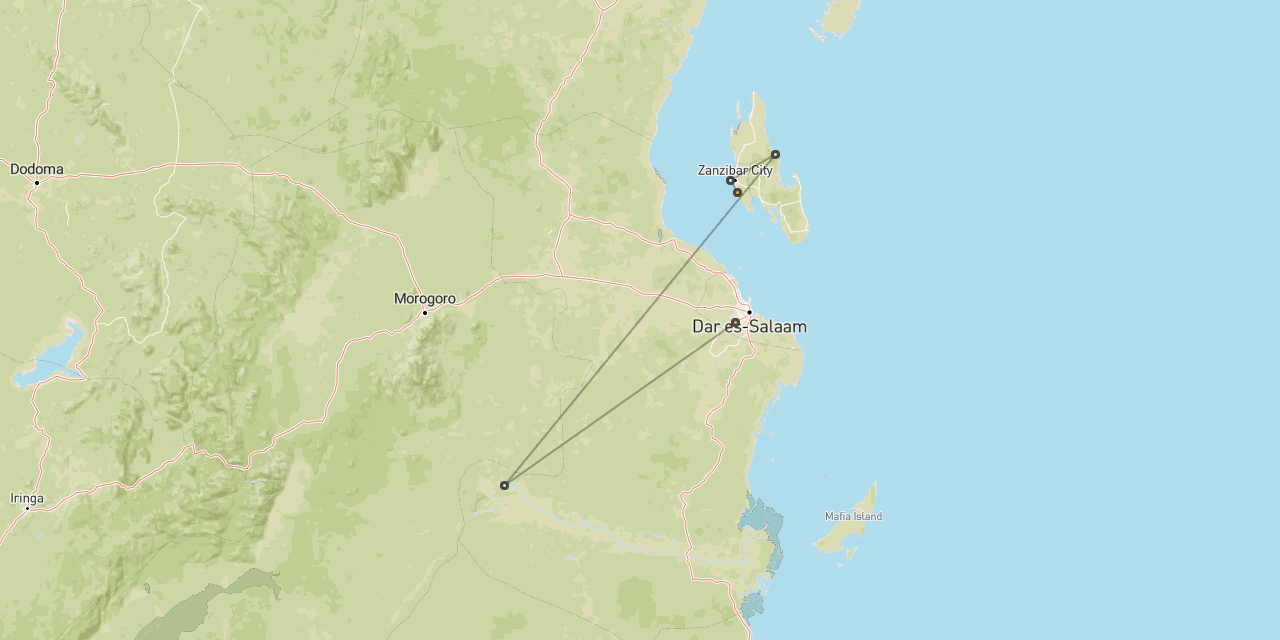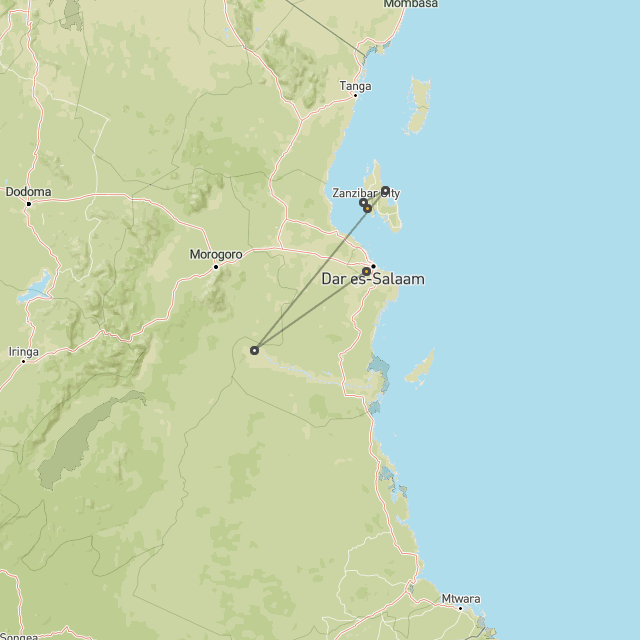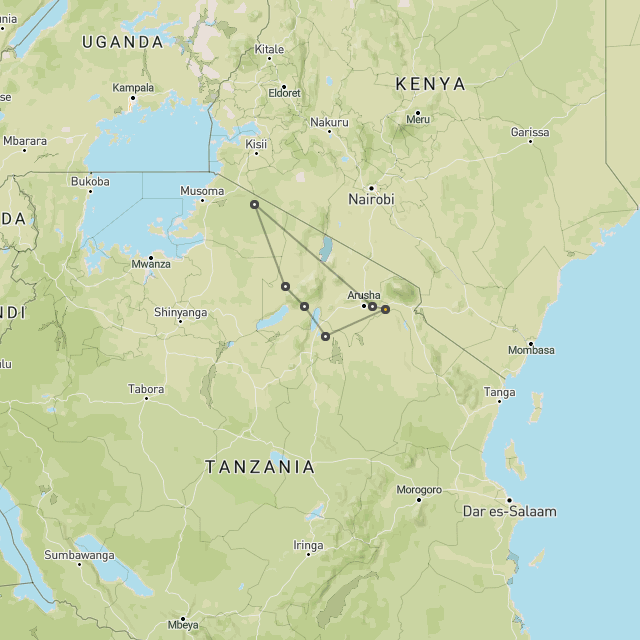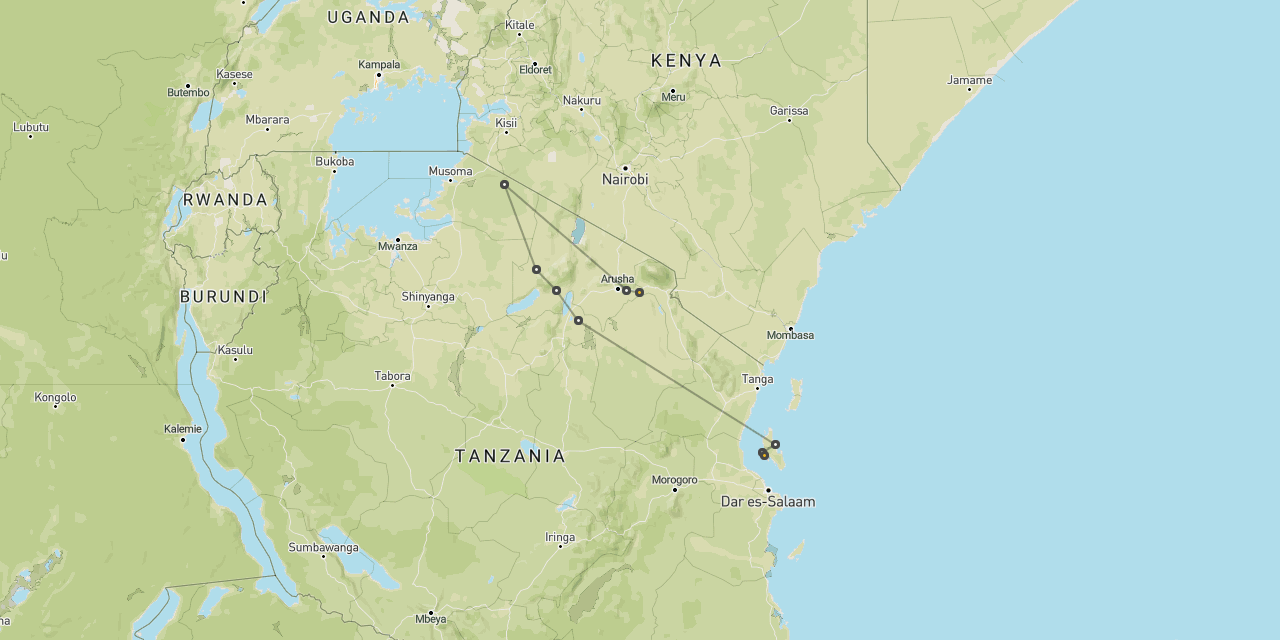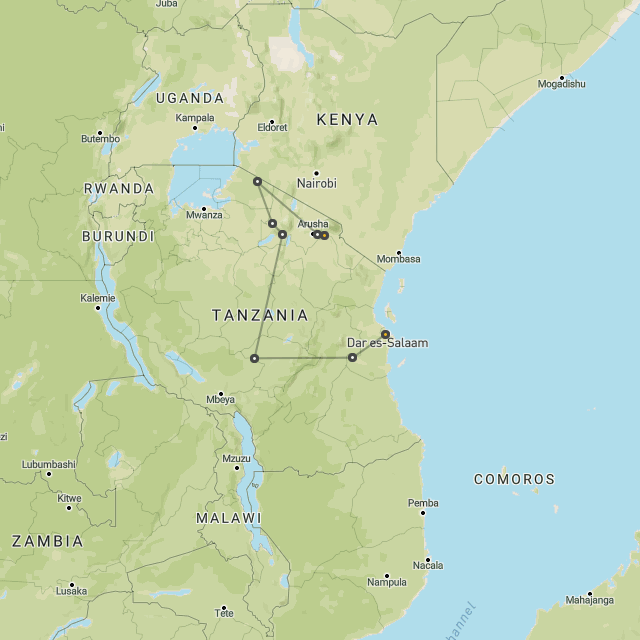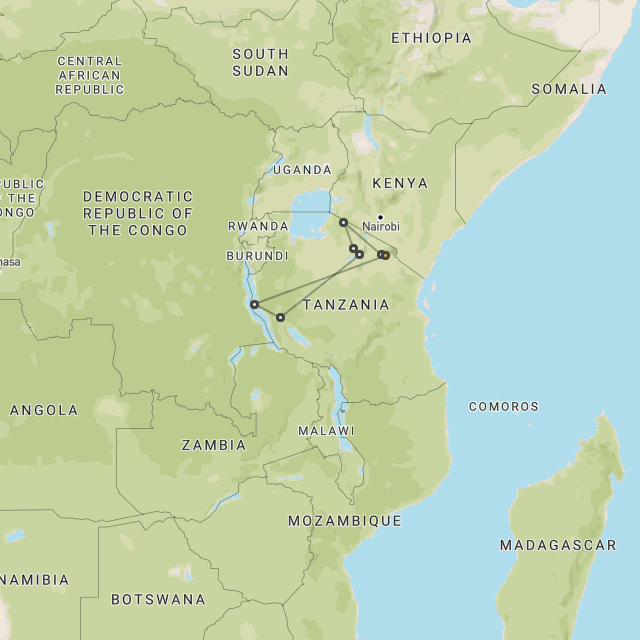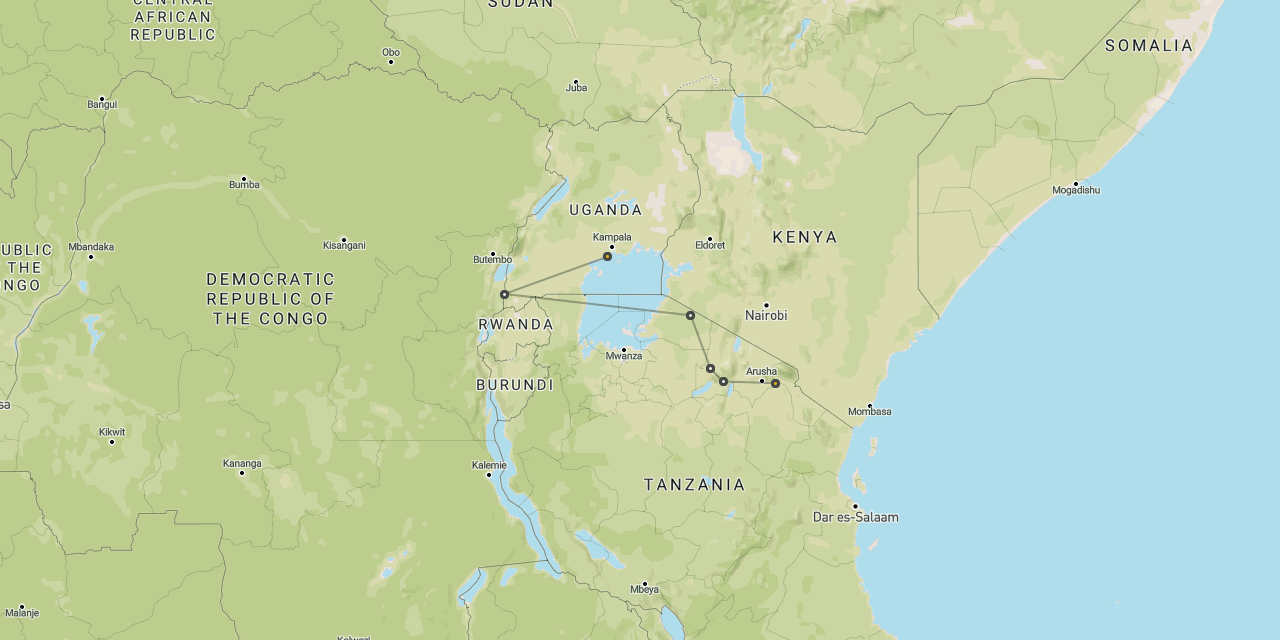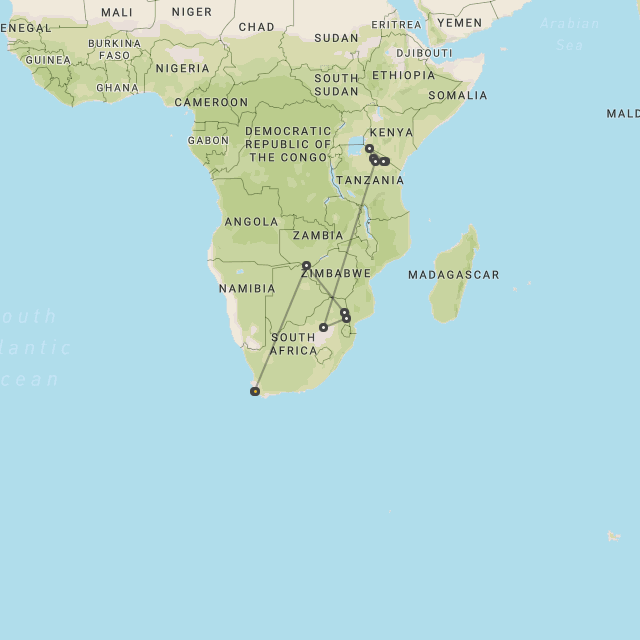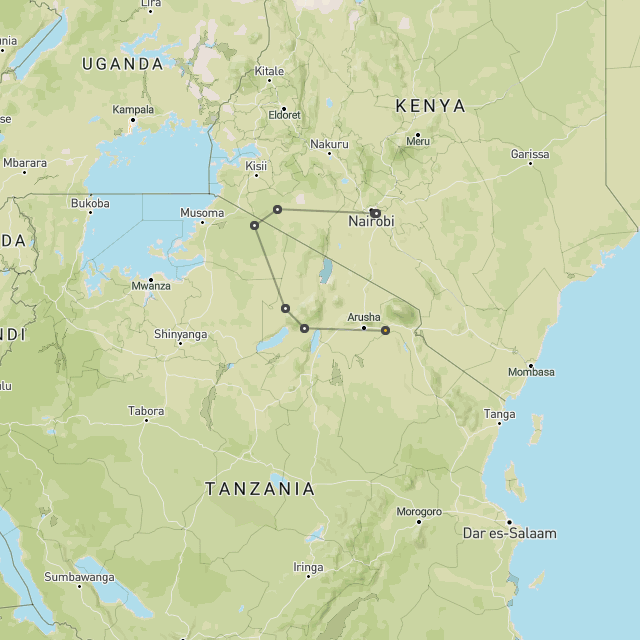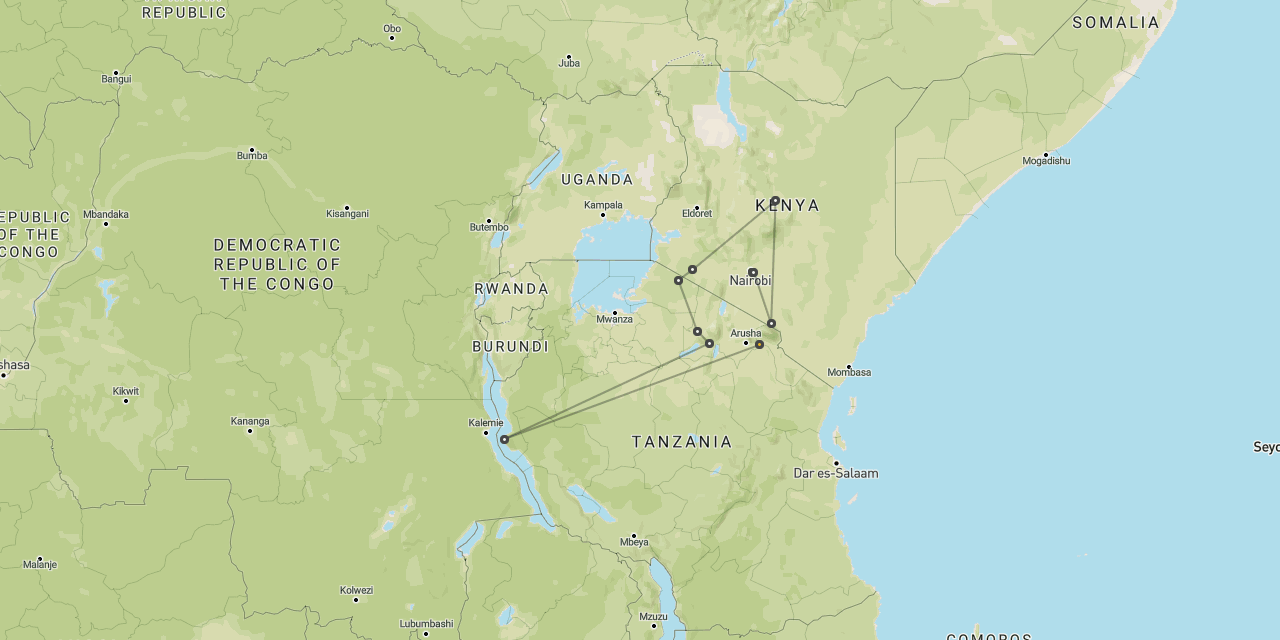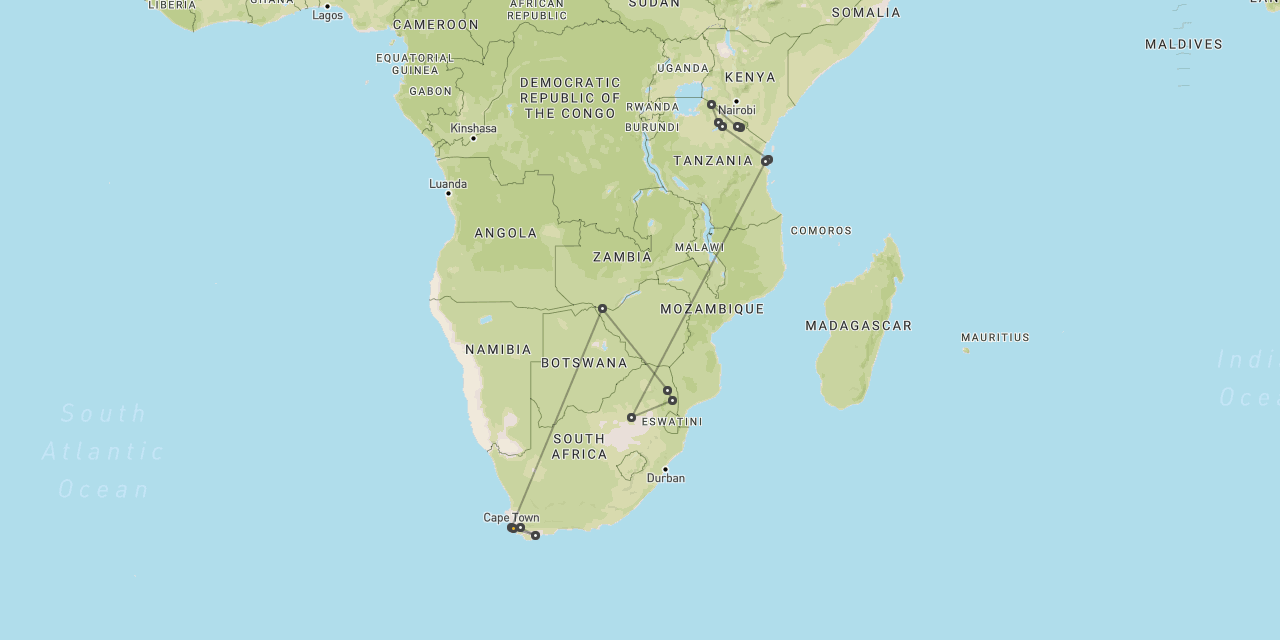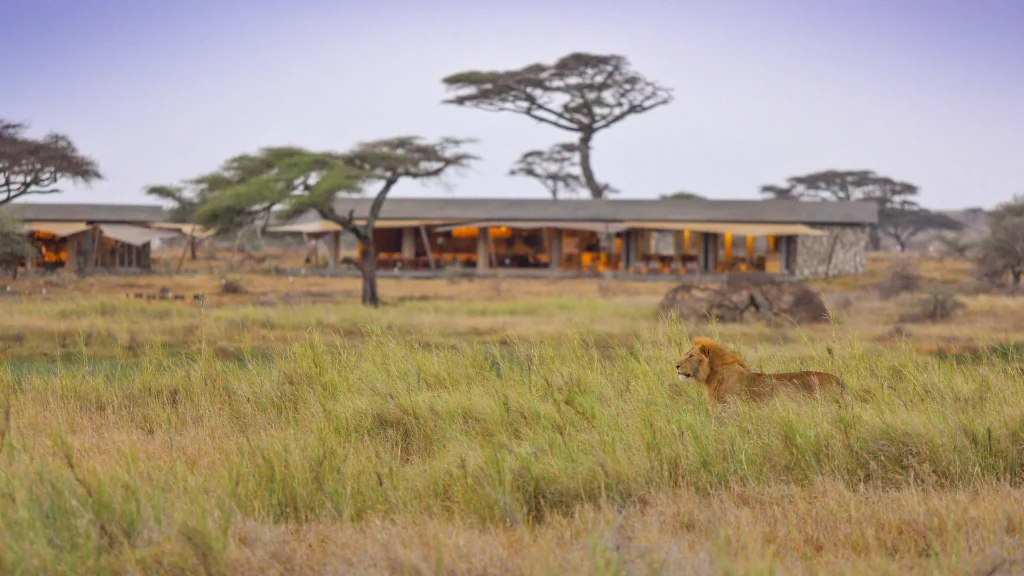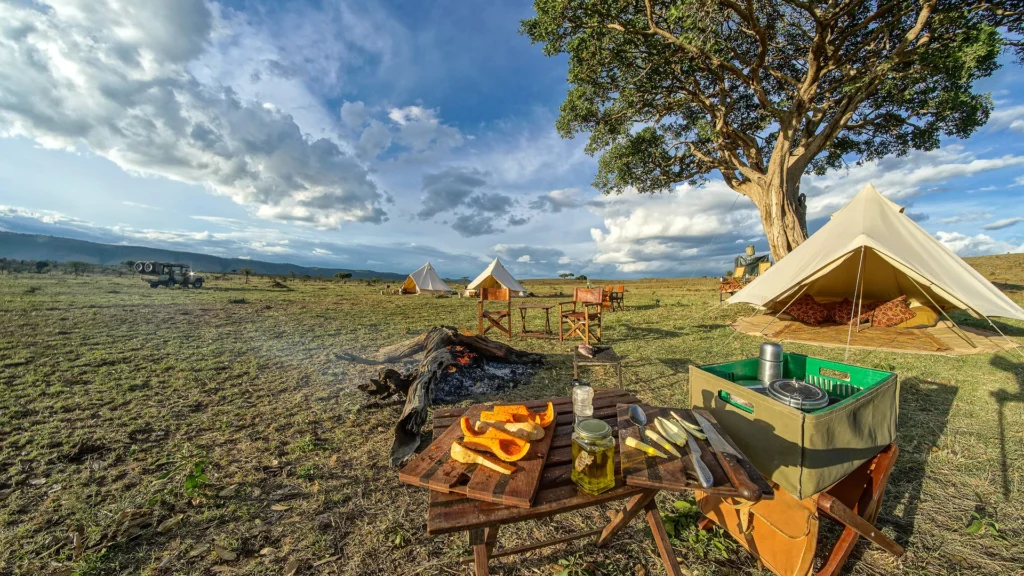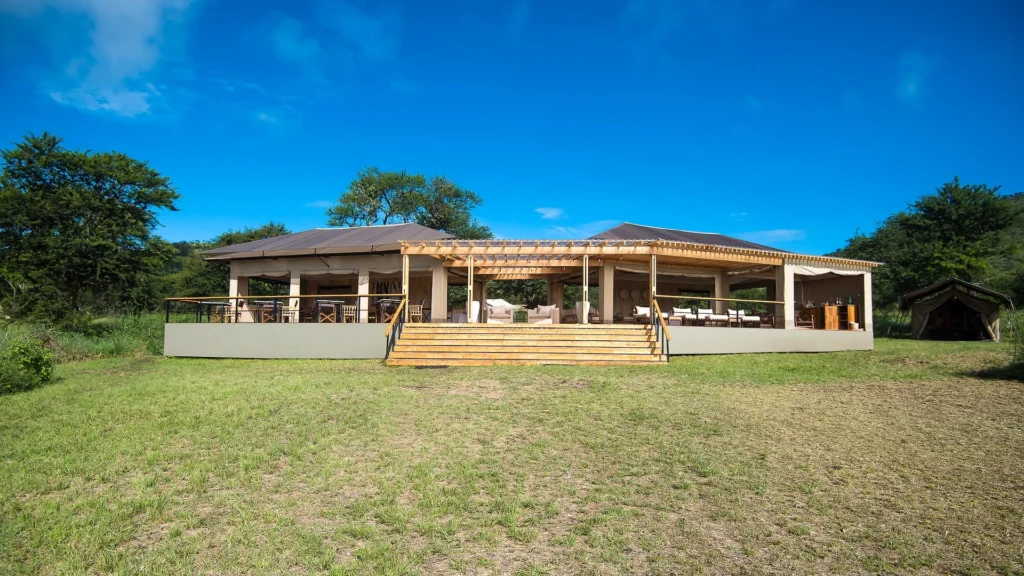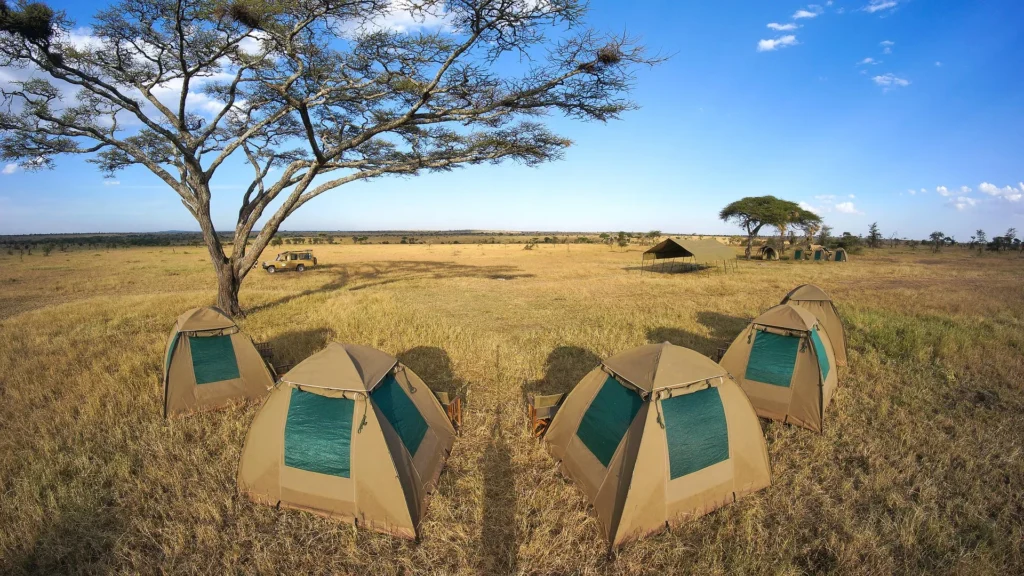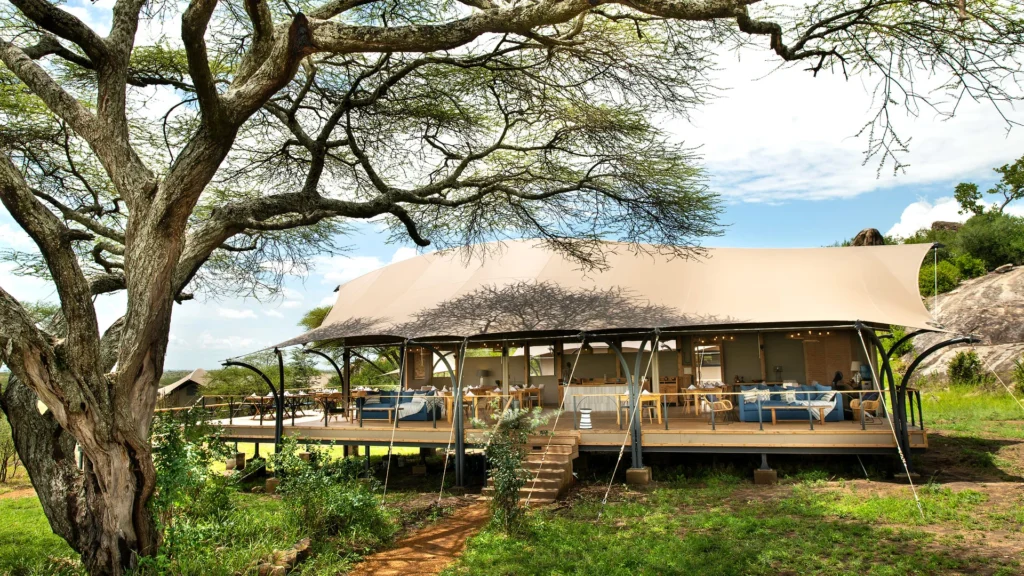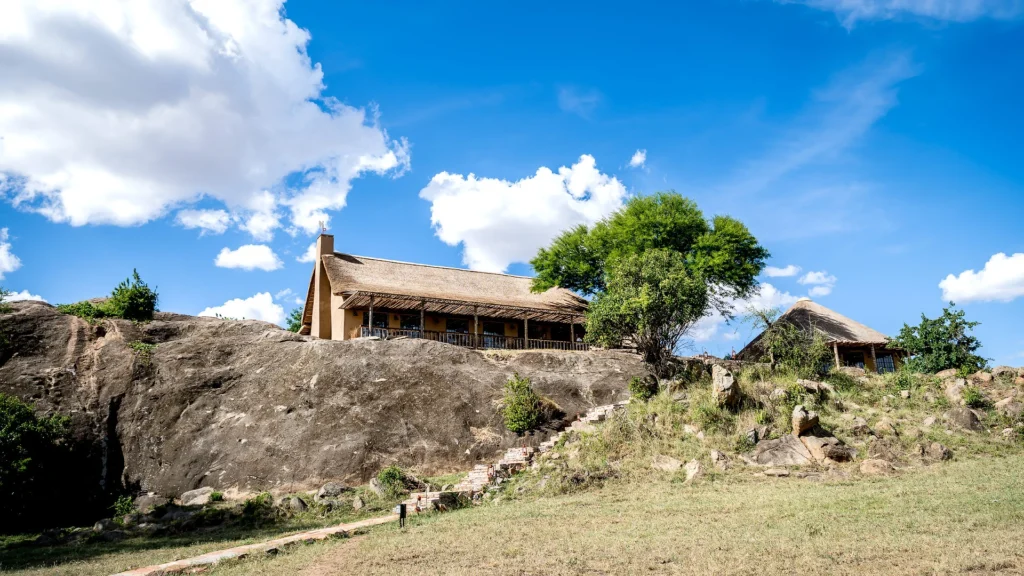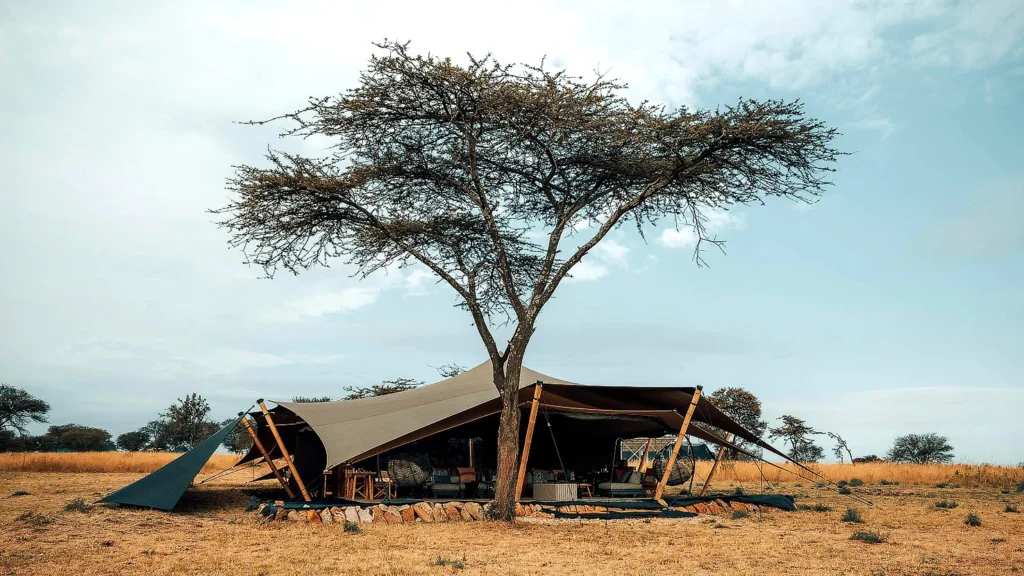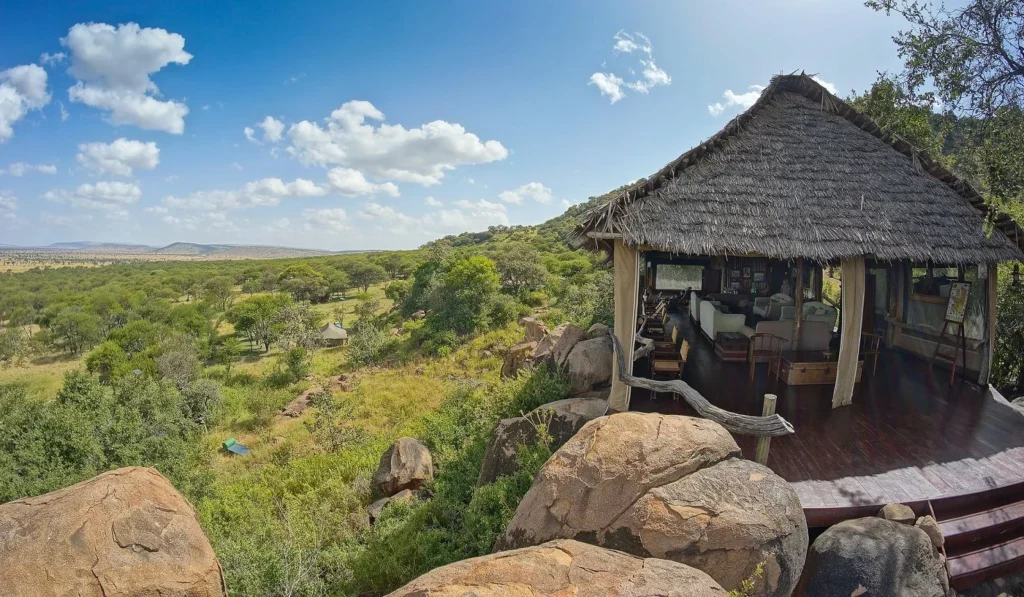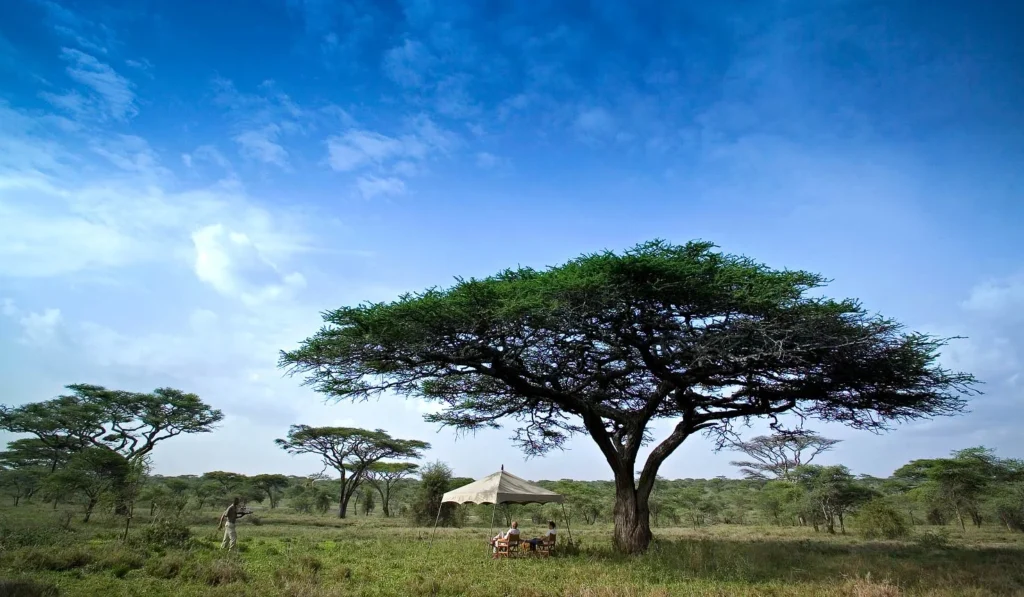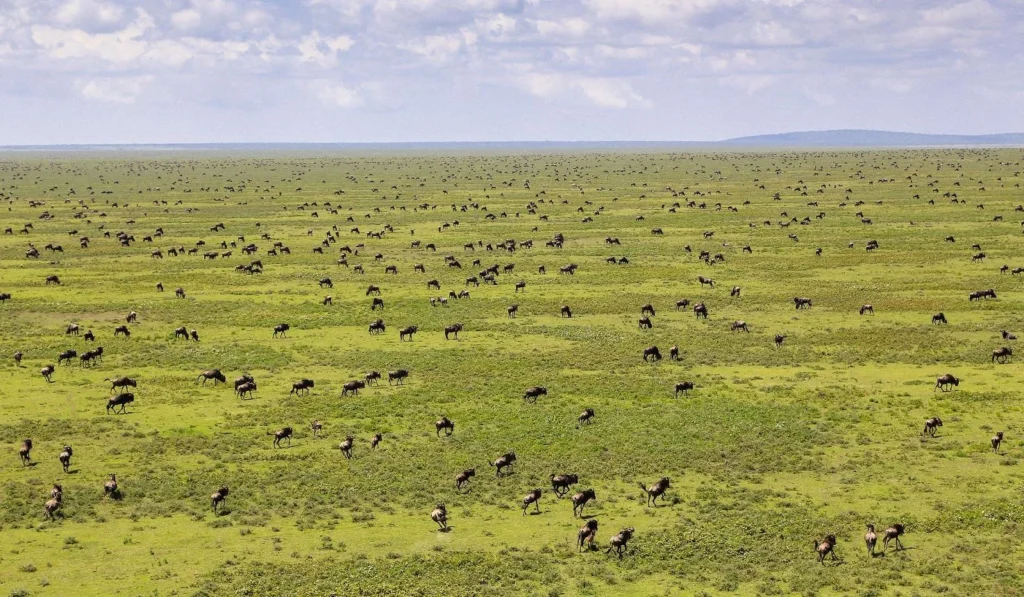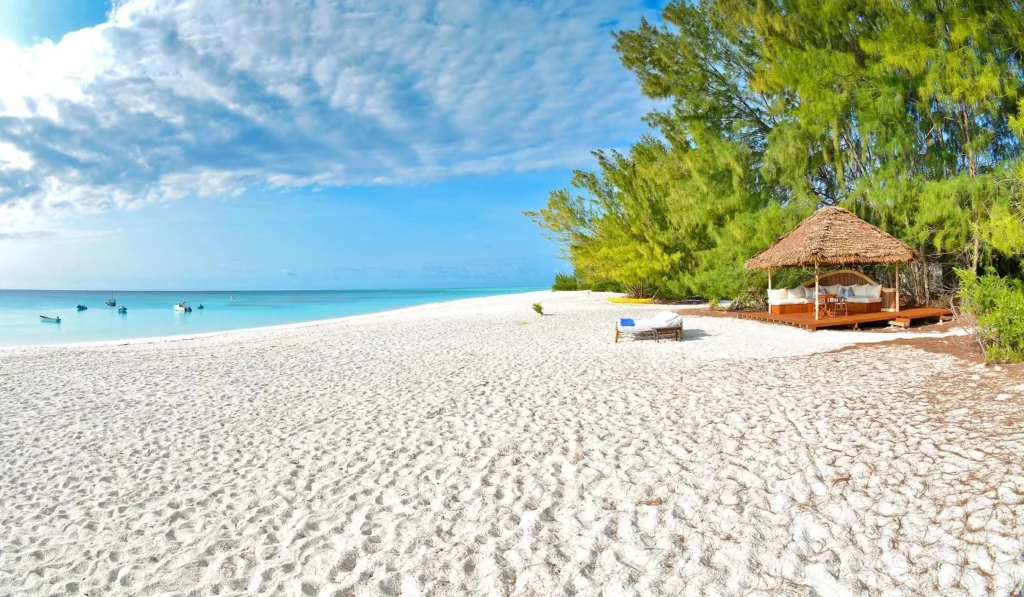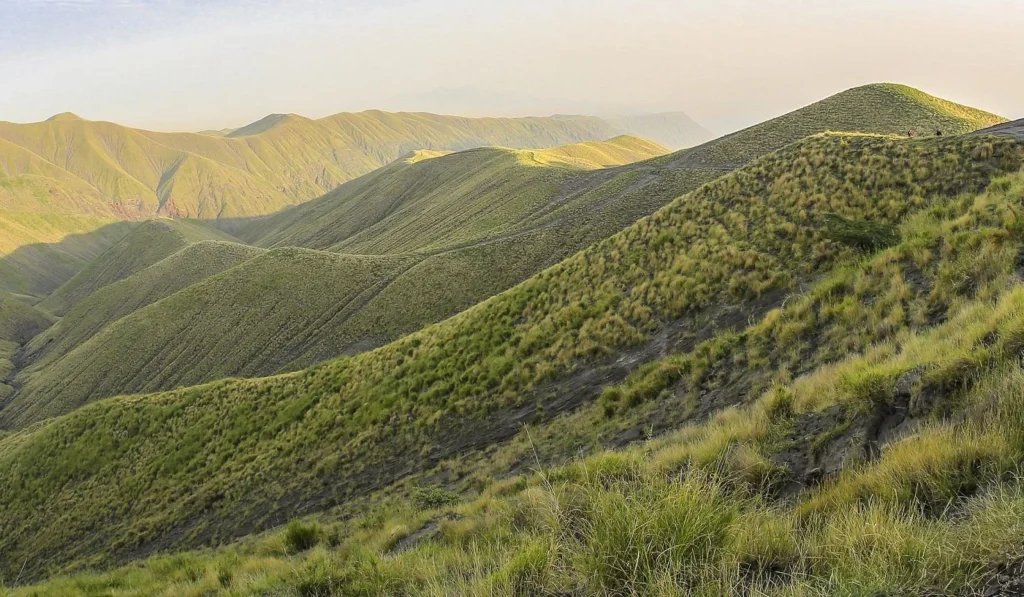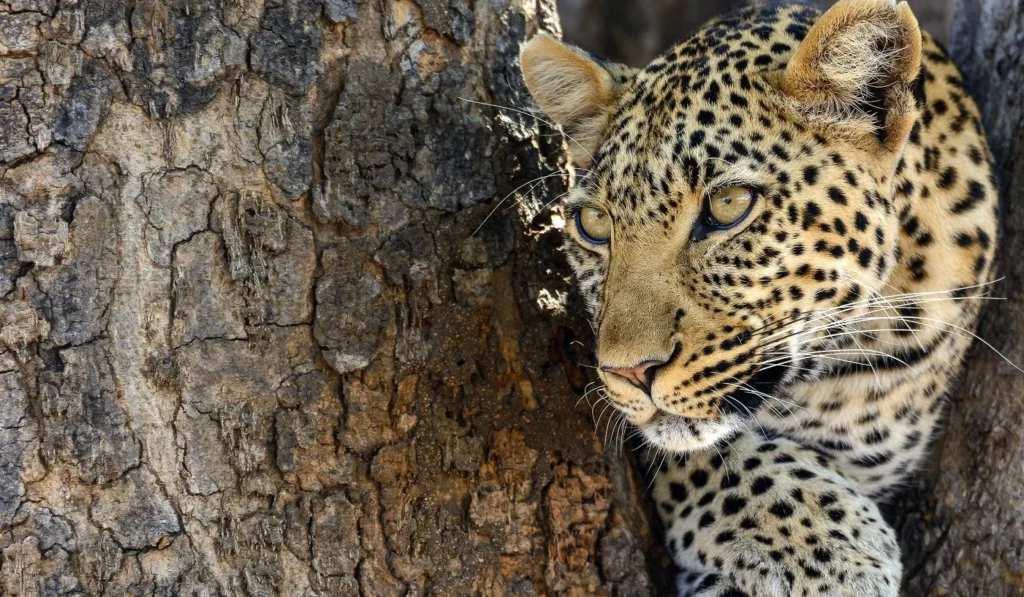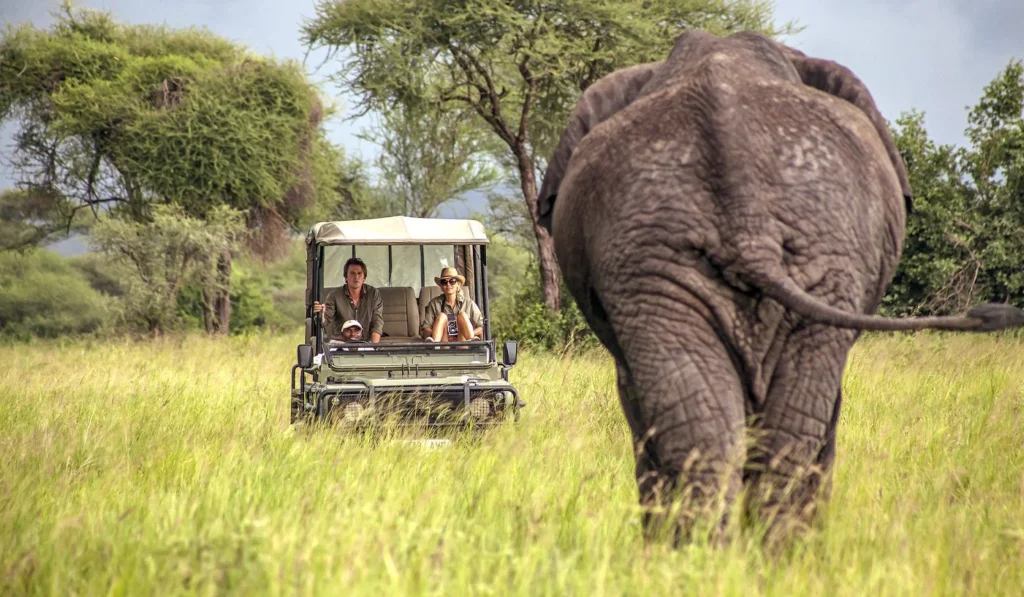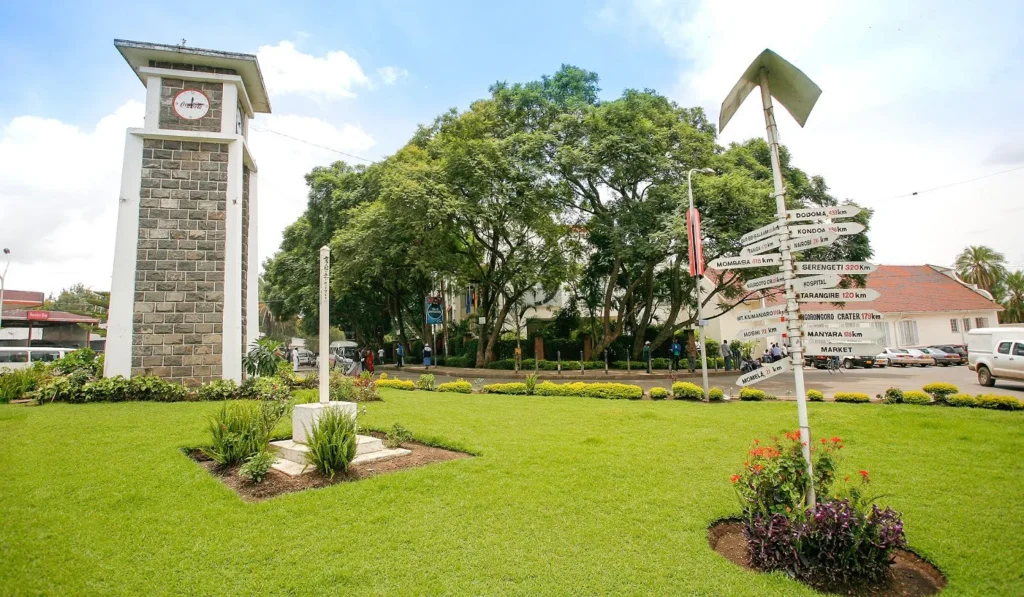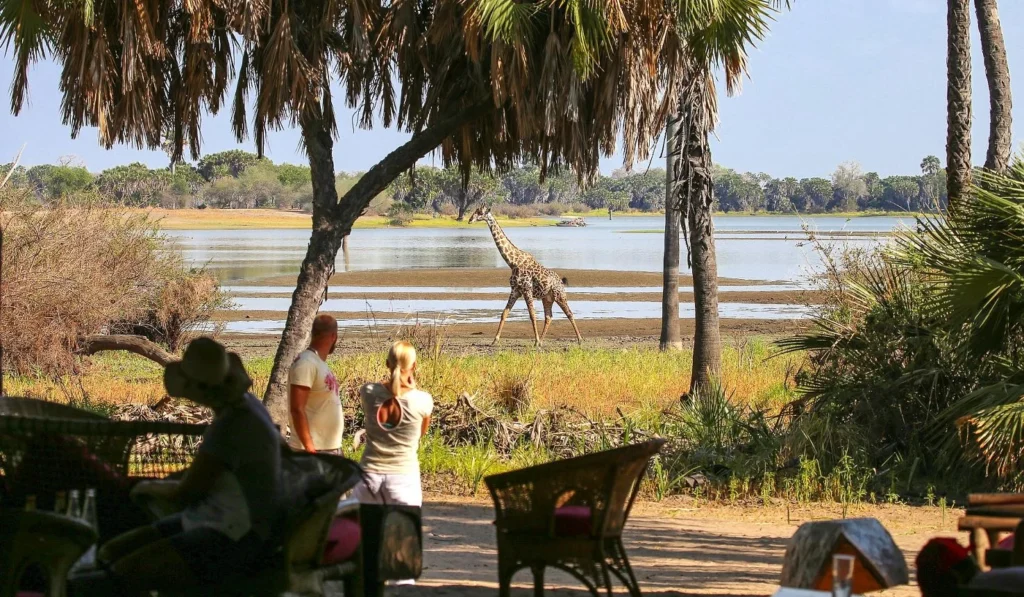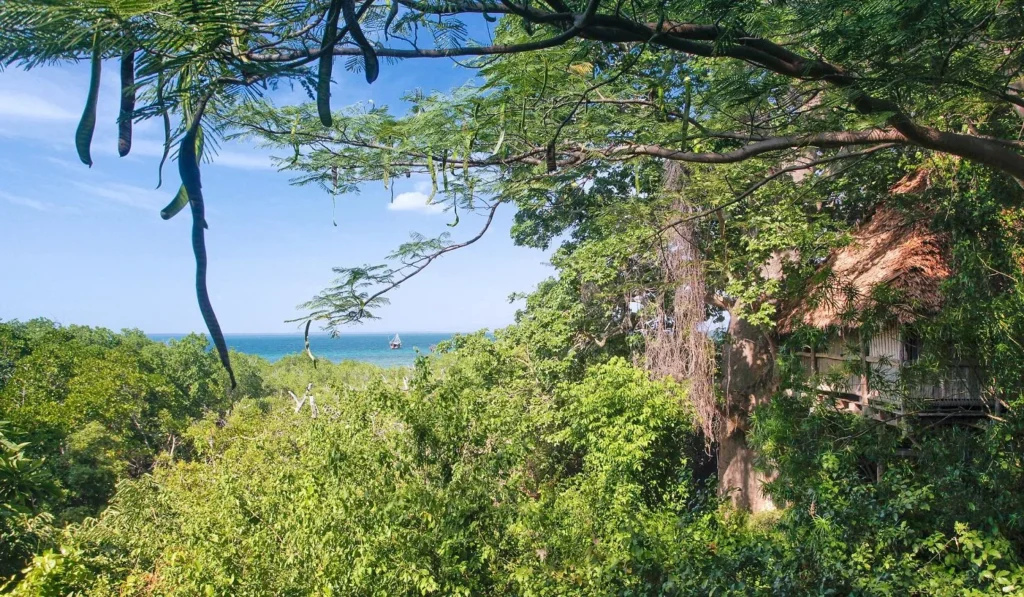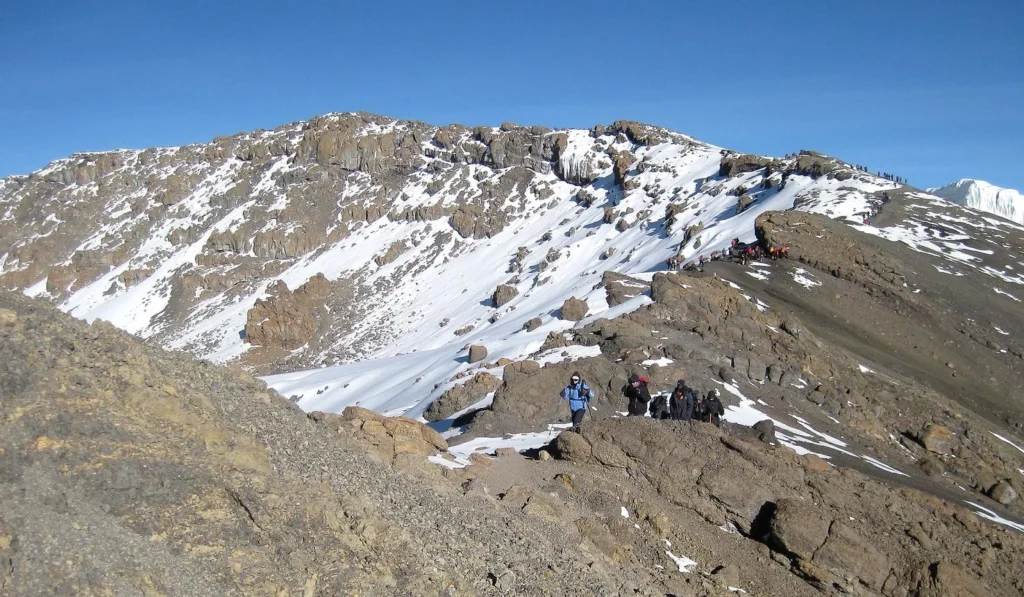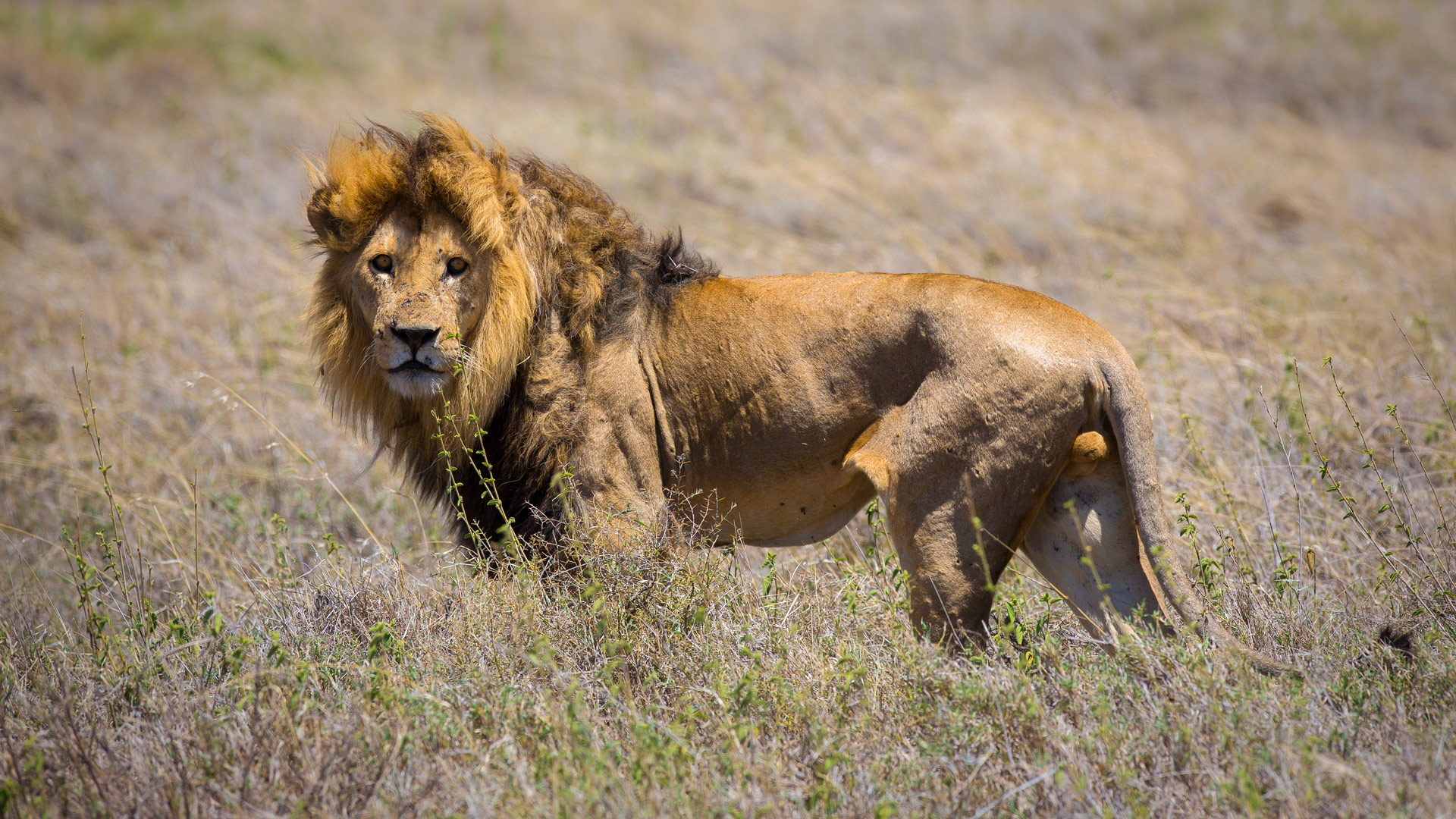
Safari to Serengeti Central
Serengeti Central
is the busy heart of the reserve,
with strong wildlife year round
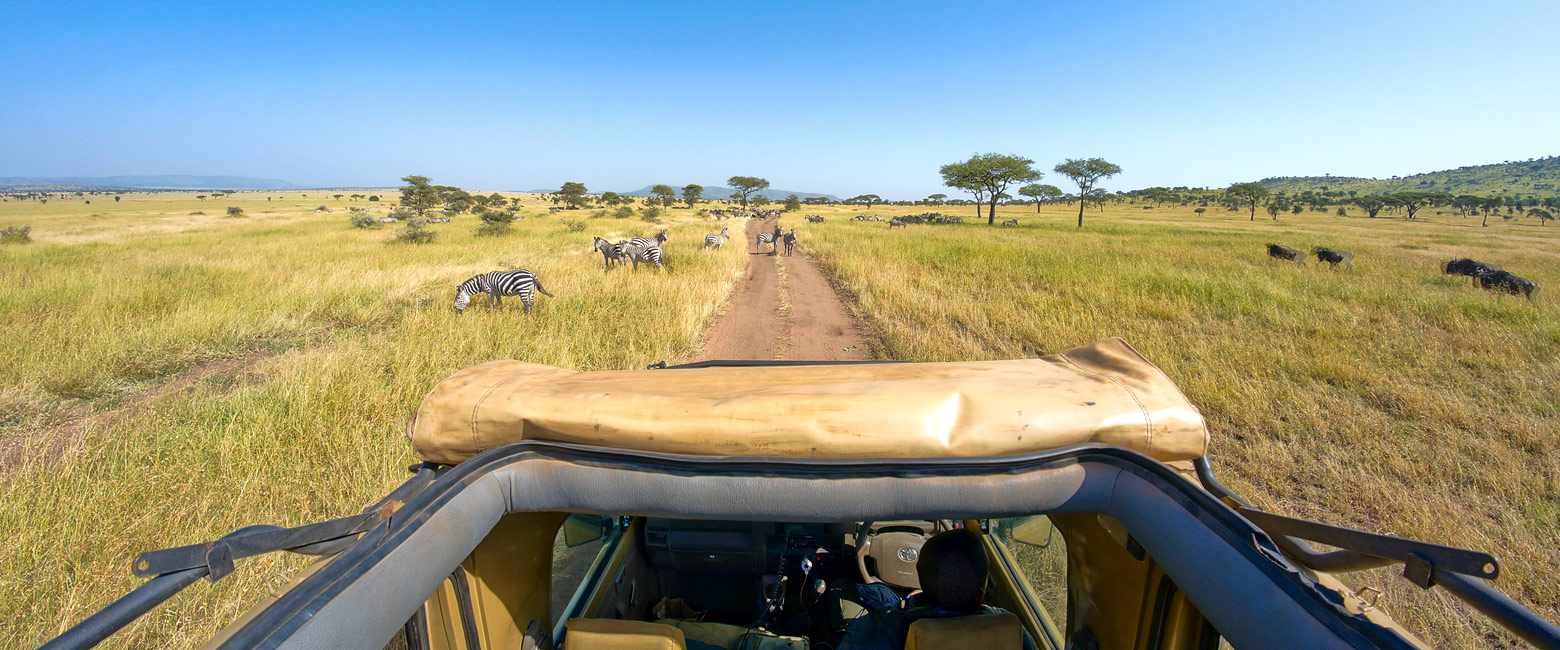
wildebeest and predator migrations
Serengeti Central is an ecologically very important sector of Serengeti National Park in Northern Tanzania.
The broad Seronera Valley is the heart of the Serengeti. Uniquely there is extremely strong wildlife viewing here year round, including two migration periods, and incredible lion and cheetah viewing during the Jun-Oct dry season.
This is also a well known area for balloon safari.
The Serengeti Central area offers an extremely wide range of accommodation options. Although a lot of the properties are larger and more commercial, there are also some lovely and relatively remote tented camps, notably on the main plains to the southeast.
However it’s very important to appreciate that parts of this area experience very high visitor traffic. It seems that virtually everyone on a lower budget or poorly planned safari ends up, by default, staying around Seronera.
Consequently, the area often experiences some pretty horrific vehicle clustering, especially on major sightings like leopards.
The contrast between crawling around the busy central road network and being out on the remote tracks across the plains cannot be overstated, it’s the difference between a terrible safari and a great safari, simple as that. Which one you experience will largely be dictated by your choice of accommodation.
Wildebeest migration
Of course the Serengeti is best known for its enormous wildebeest and zebra migration, in which close on 2.5 million herbivores munch their way along an 800 km route around the greater area, driven by the continuous search for drinking water and the quality of grazing.
The main body of the migration is formed by around 1.7 million wildebeest, who are rather dull-headed creatures. It’s the 500,000 zebras who appear to be the main decision makers in terms of routes and timings.
The migration is accessible for most of the year, although you do have to plan your safari to be in the right places at the right times.
The two periods during which the Serengeti Central area hosts the migration tend to be a little difficult to pin down with any certainty.
During the Mar-Jul period, the migration is generally moving northwards. The timing at which the herds depart the southern plains will depend very much on how strong and late the rains have been. During dry years the herds can hit these central areas during March, whilst in wetter years they may remain further south deep into April. During Apr-Jun the main herds can either route right through these central areas, or they can swing further out into the Western Corridor. Again the timing of their departure into the forests of the Northern Corridor are variable, but usually it’s only the stragglers that remain into July. Whatever happens there are big herds either within or easily accessible from this area throughout the period, even if that means having to drive out for a couple of hours to find them.
During the Oct-Dec period the southerly movement of the herds is even more difficult to predict. Again there should be plenty of wildebeest within reach throughout this period, but there are times when the herds completely misbehave or even go missing completely.
During both these periods you probably need to include a camp in this area, just in case.
However it might be worth sliding in a slightly more negative opinion. During the converse seasons, when the migration is resident in the north and south, there are major events taking place (river crossings and calving season respectively). But during the periods when the migration is passing through the Serengeti Central area, there’s not so much going on. It’s still nice to see so many animals, but the sense of spectacle is certainly not so great.
Predator migration
The Serengeti Central area contains a good range of ecosystems and there is almost always water available year round in the network of streams and pools.
Perhaps most importantly, this area hosts what is thought to be the largest migration of big predators in Africa, which can lead to amazing sightings, especially during the Jun-Oct dry season.
The unusual aspect about predator habits in this part of the world is that many of these species almost migrate in a reasonably predictable way, creating real hotspots of action that are often worth seeking out.
The vast open plains on the south offer animals like lions, cheetahs, spotted hyenas and wild-dogs the greatest banquet on earth during Dec-Mar, in the form of hundreds of thousands of defenceless baby wildebeest and zebras. Naturally the predators make the most of this scene and are easily spotted out on these open landscapes.
But during the converse Jun-Oct dry season, when the migration herds have moved off, there’s nothing much left on these plains for predators to eat. Even the non-migratory Thompson’s gazelles, Grant’s gazelles and topis disappear off to central areas in search of water. The predators are obliged to follow suit and, during these months, the riverine areas around Seronera provide the most productive predator viewing in Africa. It’s not uncommon to see in excess of a hundred lions, twenty cheetahs, two or three leopards and countless spotted hyenas in a single day.
Although these predators are usually territorial, it appears that there is some kind of right of way system, with animals being able to traverse territories unharassed, so long as they keep moving. This is particularly important for spotted hyenas, who continue to use the same den site for months, whilst commuting out and back to the migration herds to hunt.
Even the vultures and eagles migrate, with many of them using the impressive roost in the remote Olkarien Gorge to the southeast and also commuting long distances out to the migration herds, wherever they may be at the time.
Underlying these unusual movements, there are also large numbers of predators which remain more or less on their own territories year round, so you should always find some lions, leopards and spotted hyenas in central areas at any time of year.
Traffic avoidance
Anyone who tells you that the Serengeti is “too busy” or “overdone” is simply admitting that they don’t know how to go about arranging a proper safari.
In truth almost all of the vehicle clustering takes place in predictable core areas and is very easily avoided. It’s estimated that at any time 95% of visitors to the Serengeti area are in only 10% of the land.
Unfortunately it’s the Serengeti Central area that experiences the bulk of the visitor traffic and there can be pretty horrific congestion on major sightings at any time of year.
Traffic avoidance measures are extremely important in this area, your choice of camp and the routes you choose to travel will be critical to the quality of your safari experience.
Historically we used to more often than not skip the area completely, but the development of some really good camps in the more remote periphery of this area has changed things quite a lot. But you do need to get into a good camp.
As always, it’s very much up to you to make it clear to your guide quite how important avoiding other vehicles is to you.
Even if you plan it right, then there will still be moments where you hit traffic in this area, most commonly when transiting through the core area or catching a flight at the main airstrip.
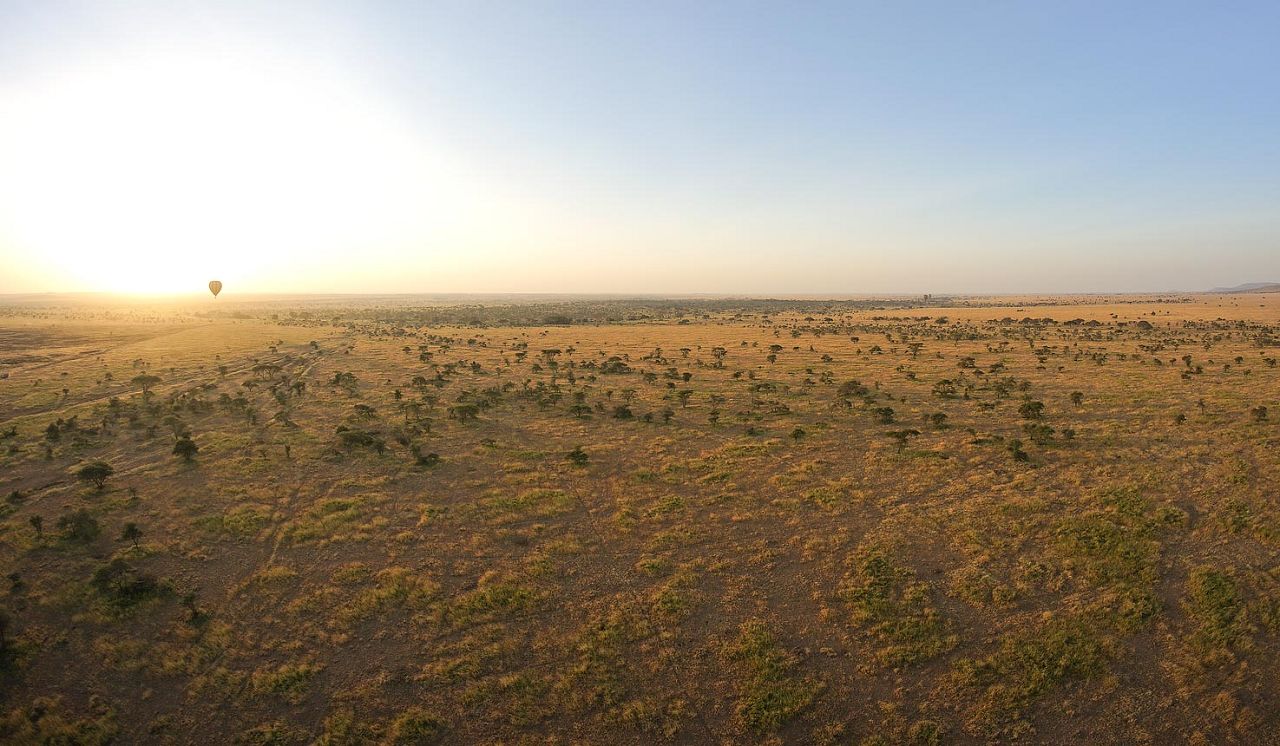
Gallery
Map
The Serengeti Central area tends to feature in far fewer trips than you might imagine, since we usually try to avoid the crowds that converge here in high season. We tend to include it only when visiting out of season or using one of the more remote camps.
The usual stay duration is 2-4 nights.
Seasonality
This Serengeti Central area tends to be of most interest during the Apr-Nov period, when transiting migration herds and intense predator action combine to make for action packed safari days. That period also largely coincides with the main dry season, although weather conditions in April and November can both be considerably less predictable.
During the converse Dec-Mar season this Serengeti Central area tends to be of less interest (although the core area can still experience very high traffic). Having said that, if the rains lull on the southern short-grass plains, the migration herds can become obliged to slide northwards onto the long-grass plains of this area, in which case the more remote southerly camps can really find themselves at the heart of the action.
Getting around
The majority of people visiting Serengeti Central do so as part of a guided overland safari, so they travel to their camp and around the area in their private vehicle.
A very few people visit Serengeti Central in isolation, flying in and out of the airstrip here. In this case they travel around the reserve with a vehicle and guide from their camp.
Where to stay
As we’ve described above, your choice of accommodation in this potentially congested Serengeti Central area will have an extraordinary influence on the quality of your safari.
The best camps are undoubtedly those which are set out on the relatively remote and inaccessible plains to the southeast of this area, including Namiri Plains Camp and Lemala Nanyukie Camp.
There’s also a few good options in the Moru Kopjes to the southwest, namely Dunia Camp, Nomad Moru Camp and Asanja Moru Camp.
There’s loads of other options, including several big hotels, but (as you will see from the ratings) most of them do inherently struggle to deliver safari with any serious level of authenticity.
serious traffic issues demand careful planning
Further reading
- Safari in Serengeti
- The best ways to experience the Serengeti migration
- The best balloon safari in Serengeti
- The best ways to avoid traffic in Serengeti
- The best time of year for safari in Serengeti
- The best locations for safari in Serengeti
- Safari in Serengeti Grumeti
- Safari in Serengeti Mara
- Safari in Serengeti North
- Safari in Serengeti Southcentral
- Safari in Serengeti Southeast
- Safari in Serengeti Southwest
- Safari in Serengeti West
let us know your thoughts about Tanzania
and we will help you create the perfect safari
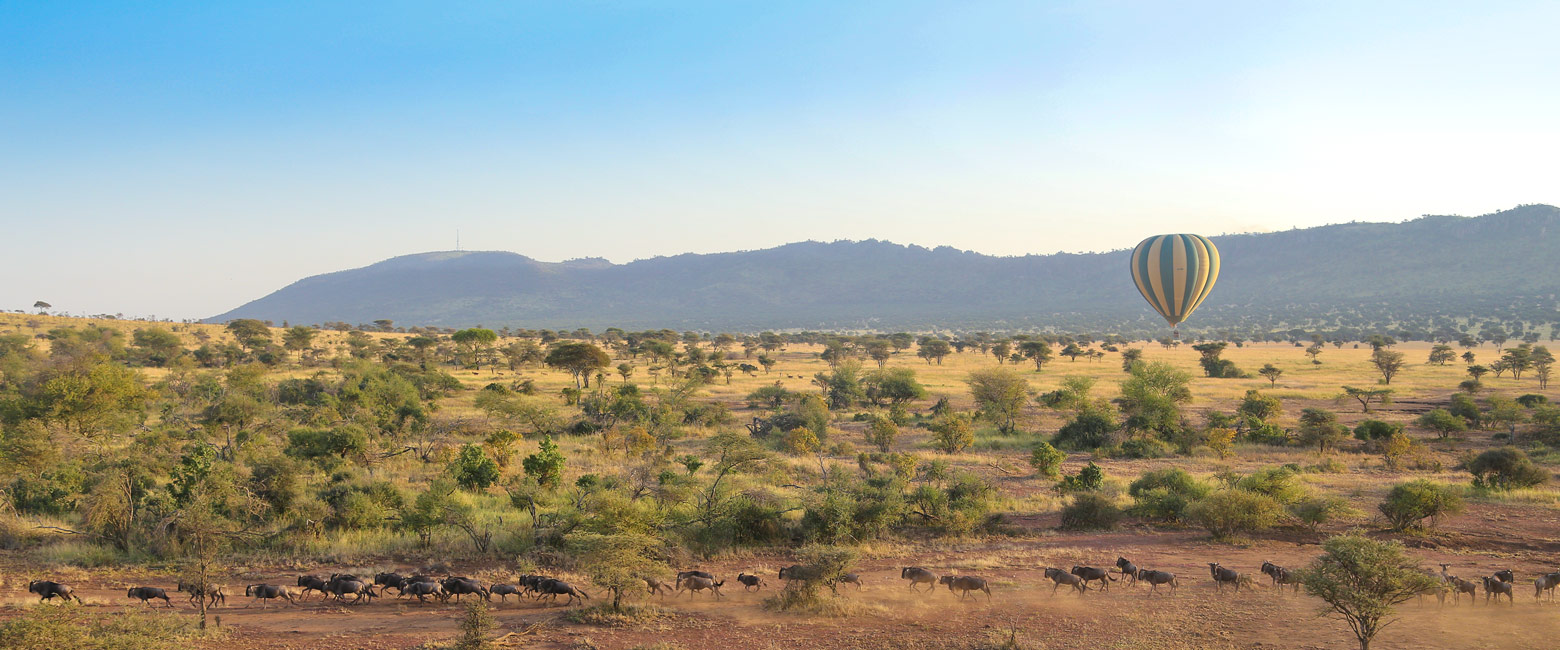
Extraordinary tailor-made adventures,
from earthy and edgy to easy and extravagant
From around USD 2500 per person, you set the ceiling
Sample Trips
Here are some of our popular trip shapes
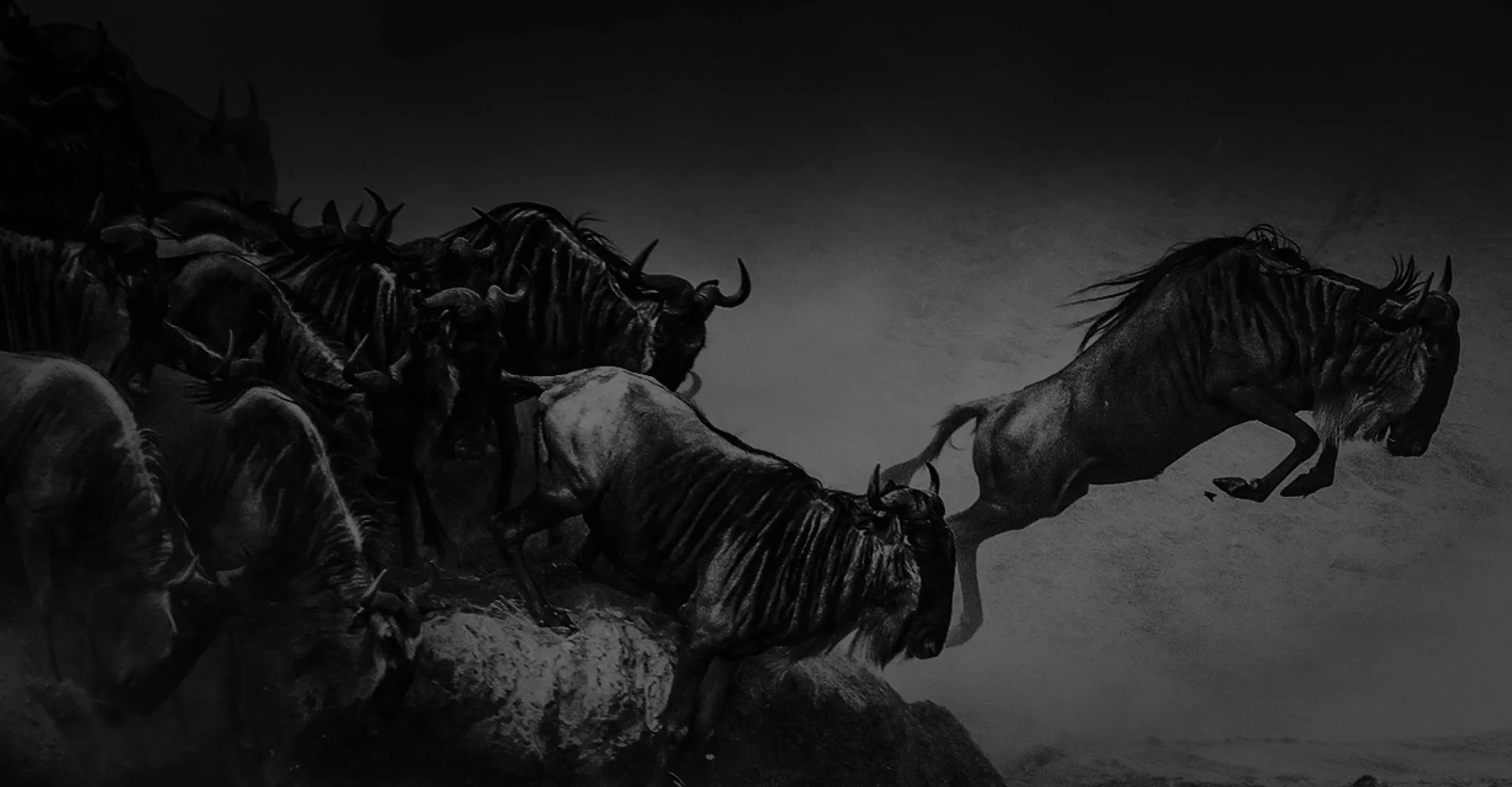
Get started on your trip
It’s never too soon to get in touch, we are here to help with every stage of your planning.
Best Lodges
We regularly inspect and photograph all of the the best lodges, to ensure that we always recommend the most suitable options
Key Locations
Take a look around related locations. Click ‘View more’ to explore locations further afield.
Where Next?
Where Next?
We offer trips to dozens of fabulous countries.
Might one of these might be your next great adventure?

Please rotate your screen.




















